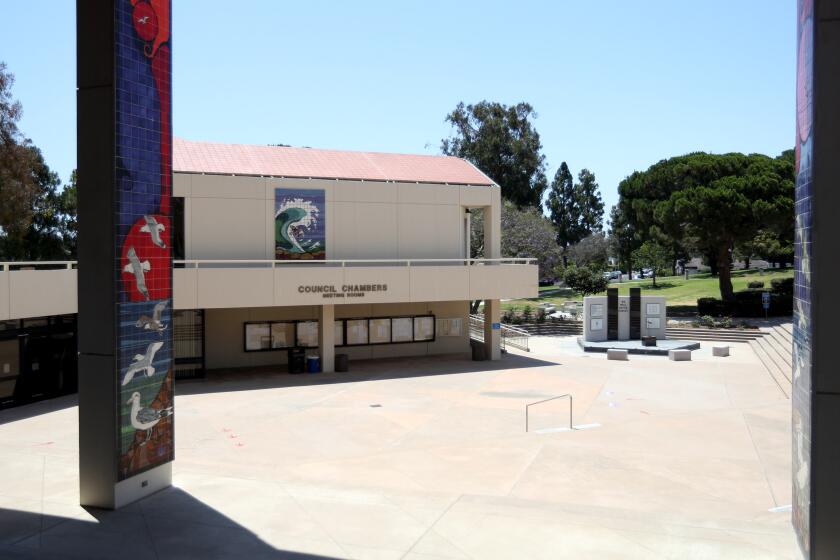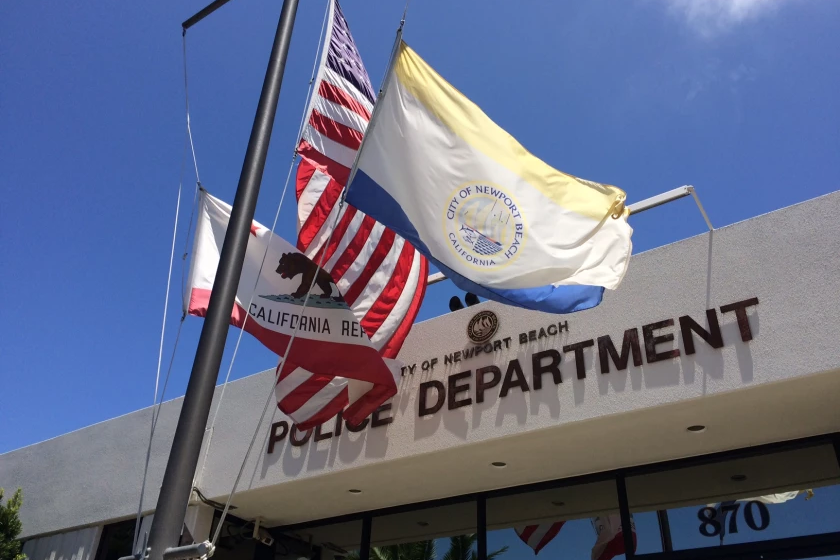Honoring a united nation
- Share via
JOSEPH N. BELL
Memorial Day has come and gone, but not the debate over the National
World War II Memorial in Washington, D.C., which was dedicated last
weekend. That’s likely to go on way past the time when there are any
World War II veterans left to go see it. Its site, price and design
-- especially its design -- have all come in for heavy criticism. But
last Saturday, several hundred thousand veterans and their families
seemed happy to use its dedication as an excuse for an enormous block
party in the nation’s capital.
They were celebrating my war, so I paid more attention to Memorial
Day -- both past and present -- this year than I usually do. When I
was growing up, my family spent every Memorial Day -- we called it
Decoration Day then -- in the county seat town of Decatur, Ind.,
where my uncle gave the same speech every year for as long as I can
remember, and there was always a parade. Most of the marchers were
World War I veterans, with a smattering of vets from the
Spanish-American War and a lone survivor of the American Civil War.
He’s the one I remember most vividly, hobbling always at the front
of the parade, leaning heavily on a cane but refusing any other help.
It was right and proper that he be first, because Memorial Day was
created to honor the Civil War dead. It has since been expanded to
embrace all American war veterans, but when I think back on those
childhood Memorial Day parades, I see that lone Civil War marcher
symbolizing the thinning ranks of World War II veterans today and
providing a bridge between the terrible fratricide of his war and the
kids, like me, who were watching him, and in less than two decades
would be fighting a war of their own.
According to news reports of last week’s memorial dedication
festivities, there were dozens of researchers on the scene collecting
oral histories from the World War II vets who had gathered there.
That got me wondering how I would respond to their questions, and the
first thought that occurred to me was what set World War II apart
from every other military action in my lifetime: the coalescing of a
nation behind a citizen military. This is the theme critics say is
lost in the design of the memorial.
It would be impossible for me to sum up my feelings about World
War II without putting it into the context of its time -- and, in my
case, to remember how the 20-year-old son of a middle-class WASP
family in a mid-size Indiana town necessarily saw those times. My
vision included none of the social injustice of the late 1930s. It
was bounded by the world in which I grew up. In that world, it was
not embarrassing to feel honest patriotism. When this country was
attacked, it was natural and normal to put aside whatever you were
engaged in and go to her defense. It was really as simple as that.
And I find efforts of politicians today to draw comparisons between
that time and the preemptive invasion of Iraq downright obscene.
This isn’t a reflection on the courageous men and women who have
fought -- and are fighting -- those subsequent wars. It is rather a
reflection on the politicians who got us into wars -- specifically
Iraq and Vietnam -- that divided rather than united this country. The
volunteers and conscripts who fought those wars without the clarity
of either personal motivation or powerful public support are heroes.
The Vietnam mea culpa of Secretary of Defense Robert McNamara was
small solace to the families of the 50,000 Americans killed in action
there. We lost a lot more men and women in World War II, but we
always knew why we were there and the solidity of our support back
home. And that’s what our memorial should make very clear.
I was a junior at the University of Missouri when Pearl Harbor was
attacked. I went home for Christmas and enlisted in the Navy. I was
underage, and my father -- in spite of the fact that we were at war
-- had to sign papers giving his permission. He put up only a brief
argument that I should finish college first. I joined the Navy Air
Corps not out of a consummate desire to fly but because it was the
most difficult service to get into and offered the greatest promise
of attracting young women.
There is an immediacy about wartime that precludes great thoughts.
You live day-to-day. Your life is bounded by what you can see. The
result is a paradox: I came home missing many of my close friends and
convinced that mankind’s only salvation is to find some means short
of war to settle our differences. But World War II also provided me
with human perquisites I might never have known any other way.
It taught me the value of interdependent friendship -- of being
able to trust and depend on another human being literally with your
life, and to be able to offer the same in return. It taught me that
both our physical and intellectual limits are far beyond what we
believe them to be -- that we can endure stress and physical
hardships and make decisions we wouldn’t believe possible under
normal circumstances. And it taught me another paradox: To take
intelligent risks, but always to understand the odds and weigh what I
might gain against them.
So what message, if any, does all this carry to new generations of
Americans who may be growing very tired of the canonizing of World
War II and the people who lived it? I think this is a question that
should have driven the thinking of the people who designed the
memorial.
I haven’t seen it. My reactions are based on pictures and written
comments, so maybe I should withhold judgment. But I don’t need to
see it to know that what the memorial must say is that united in
purpose and determination, this country is indomitable. And that for
a half-dozen very special years back in the 1940s, we proved it.
* JOSEPH N. BELL is a resident of Santa Ana Heights. His column
appears Thursdays.
All the latest on Orange County from Orange County.
Get our free TimesOC newsletter.
You may occasionally receive promotional content from the Daily Pilot.







